Installing Insulation
Installing insulation is an important component of home building and it determines how much you will spend during the life of your home on heating and cooling. In fact, heating and cooling account for 50 to 70% of the energy used in the average American home. Insulation is installed after your electrical, plumbing, and HVAC have been installed. Insulation comes in many forms including fiberglass batts, blown in fiberglass, cellulose, rigid foam, and blown in foam insulation. When referring to insulation you will see the term "R" value. The R-value is a measure of thermal resistance. The higher the R-value the better the insulation's effectiveness. Installing insulation properly in home will save you money and makes your house more comfortable by maintaining uniform temperature throughout the house.
| Insulation Types | R / inch | Insulation Types | R / inch | |
| Blown-in | Rigid Foam | |||
| Cellulose (wall) | 3.8-3.9 | Expanded Polystyrene | 4.0 | |
| Cellulose (attic) | 3.6-3.7 | Extruded Polystyrene | 5.0 | |
| Fiberglass (wall) | 3.7-4.3 | Polyisocyanurate | 6.0 | |
| Fiberglass (attic) | 2.2-4.3 | Polyurethane | 6.5 | |
| Spray-In | Other Materials | |||
| Polyisocyanurate | 7.0 | Brick | 0.2 | |
| Closed-cell polurethane | 6.0 | Glass | 0.14 | |
| Open-cell polurethane | 3.6 | Concrete | 0.08 | |
| Wood (2x4, 2x6, etc) | 1.25 | |||
| Batt | Plywood | 1.3 | ||
| Fiberglass | 3.1 | |||
| Rock Wool | 3.1 |
If you have walls built with 2x4s you can only get an R-11 or R-13 from fiberglass batt. If you build your walls with 2x6s you'll be able to install R-19 batt. It's smart to insulate floor joist for sound isolation as well as efficiency. It is typical for attics in homes built today to get R-49 to R-60 of blown in insulation installed.
Solid Fill Insulations
Solid fill insulations include spray on insulations of all types including polyurethane foam, soy based foam, wall spray cellulose. Foam insulation can be installed by a professional using special equipment to meter, mix, and spray the foam into place. Polyisocyanurate and polyurethane foam insulation can be produced in two forms: open-cell and closed-cell. In general, open-celled foam allows water vapor to move through the material more easily than closed-cell foam. However, open-celled foams usually have a lower R-value for a given thickness compared to closed-cell foams. So, some of the closed-cell foams are able to provide a greater R-value where space is limited. In open wall cavities of a new house, cellulose and fiberglass can also be sprayed after mixing the fibers with an adhesive or foam to make them resistant to settling. Whenever installing insulation you should weigh the cost of each option against the long-term savings in energy costs.

Blown-in Insulations
Another option for installing insulation is blown-in insulation. These insulations include loose Fill Fiberglass, rock wool, and some cellulose insulation applications. Blown-in insulations are installed with pneumatic equipment, usually by professional installers. This form of insulation can be used in wall cavities. It is also appropriate for unfinished attic floors, for irregularly shaped areas, and for filling in around obstructions. This is the type of insulation we used in our cabin. Here are few pictures and a video showing how blown-in insulation is installed into wall cavities.
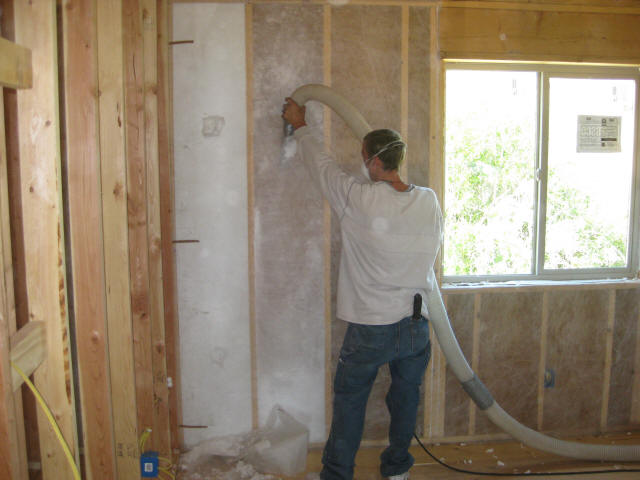

This was the truck that had the built-in blower for installing the insulation. You can see the hopper and extra bags of loose fill fiberglass.
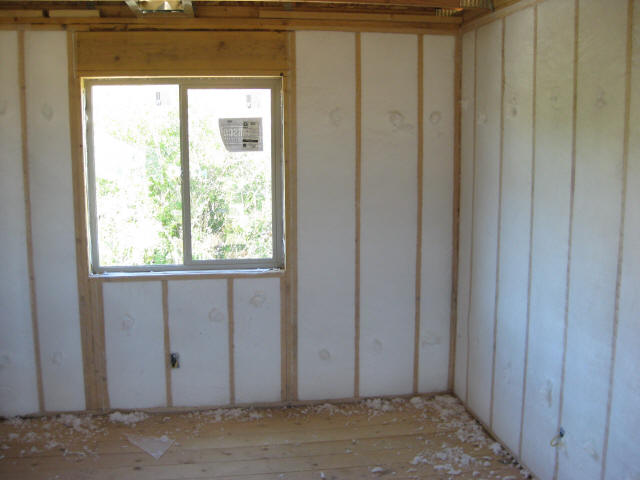
Here's some 2x6 walls filled with blown-in Fiberglass insulation.
Video clip of blowing in fiberglass insulation (.wmv, 6.5MB)
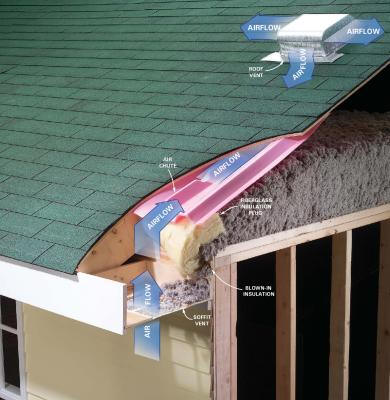
Batt Type Pieced-in Insulations
If you are looking to install insulation yourself in a newly finished room or basement you may consider using batt type insulation. These include Fiberglass Batts, Cotton Batts, and Rigid Foam Panels of Foam Board. They are available in widths suited to standard spacings of wall studs and attic or floor joists. They must be hand-cut and trimmed to fit wherever the joist spacing is non-standard (such as near windows, doors, or corners), or where there are obstructions in the walls (such as wires, electrical outlet boxes, or pipes). Batts can be installed by homeowners or professionals. They are available with or without vapor-retarder facings. Batts with a special flame-resistant facing are available in various widths for basement walls where the insulation will be left exposed.
Rigid insulation is made from fibrous materials or plastic foams and is produced in board-like forms and molded pipe coverings. These provide full coverage with few heat loss paths and are often able to provide a greater R-value where space is limited. Such boards may be faced with a reflective foil that reduces heat flow when next to an air space. Rigid insulation is often used for foundations and as an insulative wall sheathing.
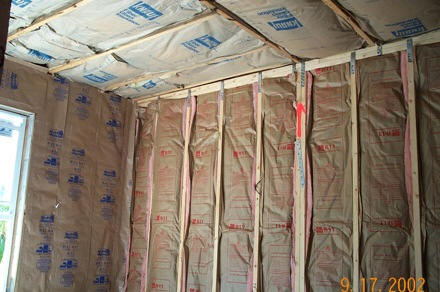
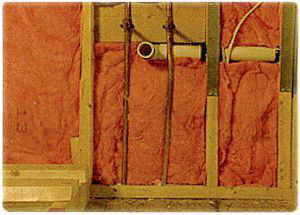
This is how not to install Fiberglass Batt insulation. Compressing batts and not filling the whole wall cavity will decrease insulation effectiveness.
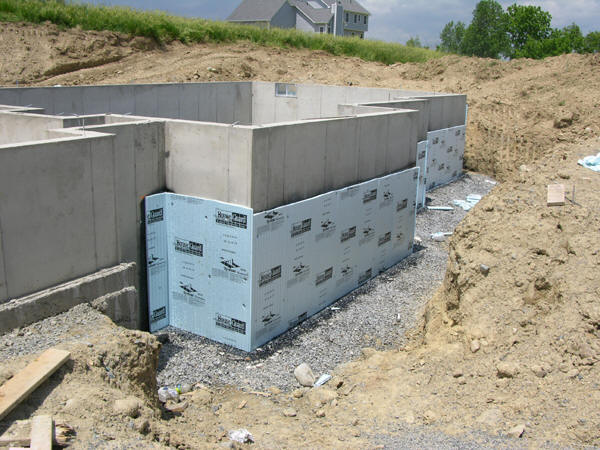
Rigid foam board, like that shown above, is typically installed to insulate foundation walls.
Air Sealing
Air sealing is important, not only because drafts are uncomfortable, but also because air leaks carry both moisture and energy, usually in the direction you don't want. For example, air leaks can carry hot humid outdoor air into your house in the summer, or can carry warm moist air from a bathroom into the attic in the winter.
Most homeowners are aware that air leaks into and out of their houses through small openings around doors and window frames and through fireplaces and chimneys. Air also enters the living space from other unheated parts of the house, such as attics, basements, or crawlspaces. The air travels through:
- any openings or cracks where two walls meet, where the wall meets the ceiling, or near interior door frames;
- gaps around electrical outlets, switch boxes, and recessed fixtures;
- gaps behind recessed cabinets, and furred or false ceilings such as kitchen or bathroom soffits;
- gaps around attic access hatches and pull-down stairs;
- behind bath tubs and shower stall units;
- through floor cavities of finished attics adjacent to unconditioned attic spaces;
- utility chaseways for ducts, etc., and
- plumbing and electrical wiring penetrations.
These leaks between the living space and other parts of the house
are often much greater than the obvious leaks around windows and
doors. Since many of these leakage paths are driven by the tendency
for warm air to rise and cool air to fall, the attic is often the
best place to stop them. It's important to stop these
leaks before installing attic insulation because the insulation may
hide them and make them less accessible. Usually, the
attic insulation itself will not stop these leaks and you won't save
as much as you expect because of the air flowing through or around
the insulation.
When natural ventilation has been sharply reduced, as in a more
energy-efficient house, it may be necessary to provide fresh air
ventilation to avoid build-up of stale air and indoor air
pollutants. Special air-to-air heat exchangers, or
heat-recovery ventilators, are available for this purpose. It is also possible
to incorporate a supply of fresh outside air into your heating and
cooling system. This arrangement can be used to create a slightly
higher pressure inside your home, which will prevent uncontrolled
outside air infiltration into your home.
Moisture Control and Ventilation
Wet insulation doesn't work well. Also, installing insulation is an important part of your building envelope system, and all parts of that system must work together to keep moisture from causing damage to the structure or being health hazards to the occupants. For example, mold and mildew grow in moist areas, causing allergic reactions and damaging buildings.
Moisture can enter your home during the construction process. The building materials can get wet during construction due to rain, dew, or by lying on the damp ground. Concrete walls and foundations release water steadily as they continue to cure during the first year after a home is built. During the house's first winter, this construction moisture may be released into the building at a rate of more than two gallons per day, and during the second winter at a slower rate of about one gallon per day. You may need to use dehumidifiers during this initial time period.
Back to top - Installing Insulation
Building Insulation - Performance Comparison
Places to add Insulation for $ Savings and comfort
25 Checkpoints for Inspecting Insulation Jobs
Installation Guide - Fiber Glass Loose Fill Insulation
Air Infiltration - Myths and Realities
